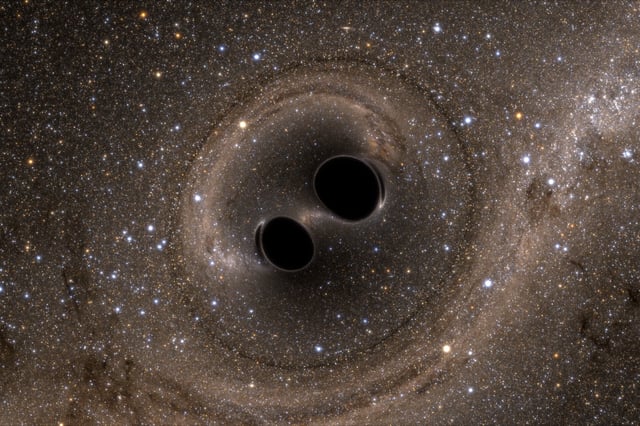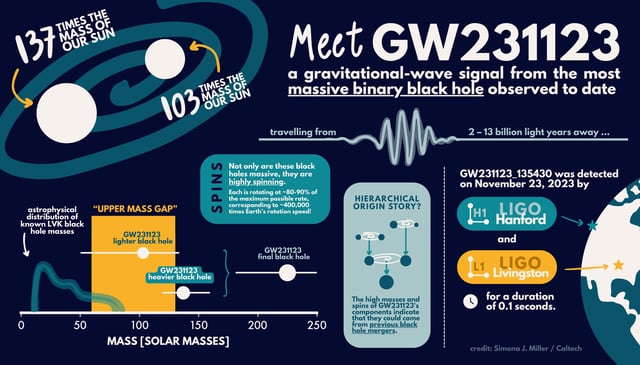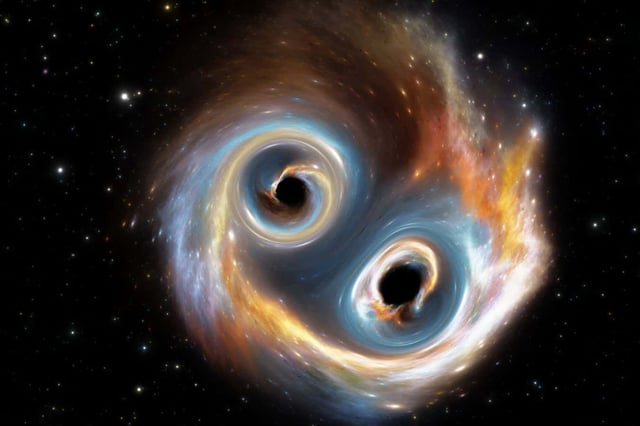Overview
- Initial analysis released July 13 confirms GW231123 as the most massive black hole merger observed, with component masses of roughly 140 and 100 times the sun’s mass.
- The collision yielded a remnant black hole of about 225 solar masses, surpassing the previous 140-solar-mass record.
- Extreme mass limited LIGO’s detection to just 0.1 seconds of the gravitational-wave signal, reducing data available for interpretation.
- Both progenitor black holes spun at approximately 90% and 80% of their theoretical speed limits, among the highest spins ever measured.
- Researchers are refining parameter estimates and preparing a comprehensive public data release to probe hierarchical merger and AGN disk growth scenarios.


